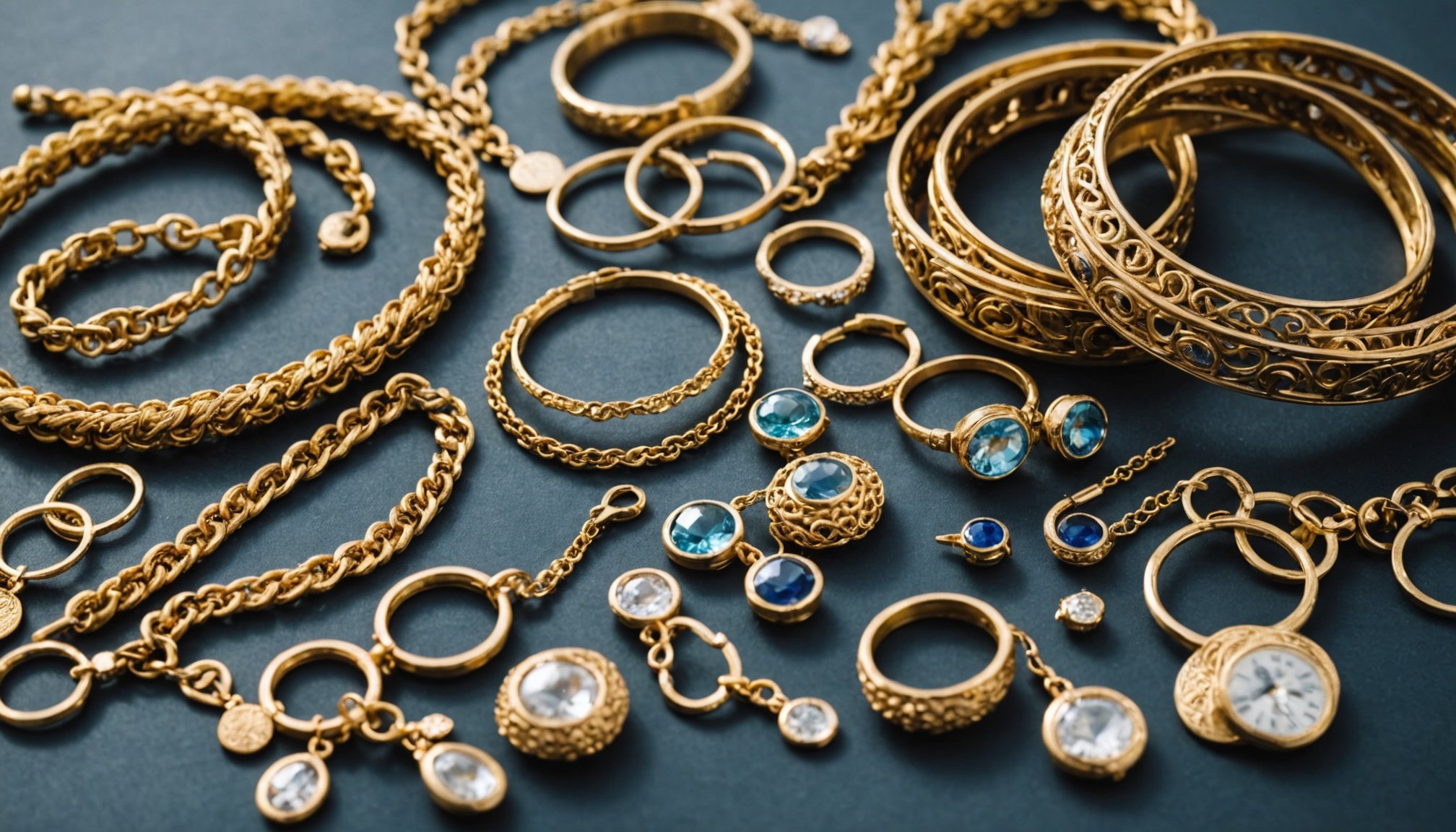Understanding Jewelry Tarnish
Jewelry tarnish is a chemical reaction that affects the surface of metals, causing them to lose their luster and, in some cases, change color. This process primarily occurs in materials such as silver and copper, which means not all jewelry is equally susceptible. Tarnishing is accelerated by exposure to air, moisture, and external substances like lotions and perfumes.
The tarnishing process involves the metal reacting with sulfur-containing compounds in the air, leading to the formation of a dark, often unattractive layer known as a patina. In humid environments, like those frequently encountered in the UK, this reaction is intensified. The high levels of air moisture facilitate the movement of sulfur compounds, which come into contact with the jewelry surfaces more readily, speeding up the tarnishing process.
Also to read : Elevate your locks: the definitive handbook for combining thermal protectants and styling sprays
UK humidity is a specific factor that exacerbates the tarnishing of jewelry. Given the frequent rain and periods of high humidity typical in the UK, the conditions are prime for tarnish to develop quickly on exposed jewelry. This makes it crucial for individuals in the UK to take preventive measures, such as storing jewelry in airtight containers, to mitigate the effects of tarnishing. Understanding these factors is essential to preserve the aesthetic and structural integrity of jewelry pieces.
Proper Jewelry Storage Techniques
Storing jewelry correctly can dramatically extend its lifespan. To effectively prevent tarnish, jewelry storage should focus on minimizing exposure to moisture and humidity, which are key culprits in tarnishing metals.
Also to discover : Mastering minimalism: your ultimate guide to creating a stunning versatile jewelry collection
Humidity control is crucial. Using a dehumidifier in storage areas helps maintain a low moisture environment. Silica gel packets or activated charcoal can be placed alongside jewelry to absorb excess moisture, providing an economical and practical method.
It’s essential to use anti-tarnish solutions for optimal storage. Specialized pouches and cases lined with materials containing sulfur-absorbing compounds are recommended. These materials actively work to protect jewelry by neutralizing harmful elements in the air.
When considering materials for storage, cloths and pouches made from natural fibers like cotton flannel with anti-tarnish properties are ideal. Not only do they safeguard against tarnish, but they also cushion and protect delicate pieces.
Finally, store jewelry in closed containers or drawers to limit exposure to open air. Avoid using plastic bags or boxes as they can trap humidity, worsening the problem. With these techniques, your treasured pieces can retain their shine and sparkle for a lifetime.
Cleaning Methods for Jewelry Maintenance
Understanding effective jewelry cleaning methods is crucial for the longevity of your precious metals. Different metals require tailored techniques to maintain their shine and prevent tarnish. Gold, for instance, can be cleaned using a simple solution of mild dish soap and warm water. A soft cloth is your best tool to gently remove any dirt without scratching the surface. Similarly, sterling silver demands care; a paste made of baking soda and water acts as an excellent tarnish removal method, restoring its natural sheen.
Regular maintenance is key to avoiding tarnish buildup. How frequently should you clean your jewelry? Ideally, pieces worn daily should be cleaned every one to two weeks, while less frequently worn items can be serviced monthly. This schedule ensures your jewelry remains in pristine condition while preventing long-term degradation.
When selecting cleaning products, opt for those specifically designed for jewelry. Look for non-abrasive, chemical-free solutions that are safe for gems and metals. Ultrasonic cleaners are effective but should be used cautiously, especially with delicate stones. Remember, always read product labels to ensure compatibility with your jewelry type. By following these maintenance tips, you can keep your treasured items radiant and beautiful for years to come.
Use of Anti-Tarnish Products
Preserving the pristine look of your jewellery can be a challenge, especially in the humid UK climate. Fortunately, anti-tarnish products can be highly effective in maintaining your precious pieces. These solutions encompass a variety of forms, including sprays, cloths, and storage containers. Each type has unique features to prevent tarnishing by forming a protective barrier against moisture and pollutants.
In particular, some jewelry protectants are better suited to the UK’s distinct weather conditions. For instance, silica gel packets and anti-tarnish cloths are common recommendations due to their ability to absorb excess moisture effectively. Furthermore, clear protective sprays can be applied directly to metal surfaces to stave off oxidation.
It’s crucial to select the appropriate preventative measures as per the material of your jewellery. Silver jewellery, for instance, often benefits significantly from storage in anti-tarnish bags, which are infused with agents that neutralise sulphur compounds—common culprits of tarnish.
Experts advise regular use of these anti-tarnish solutions to ensure long-lasting jewellery shine. They recommend choosing products with proven efficacy, matched to your specific jewellery type and environmental conditions, to achieve optimal protection and wearability.
Lifestyle Adjustments to Prevent Tarnish
Tarnish on jewellery can be a vexing issue for many. Implementing simple lifestyle changes can significantly minimise the risk. The impact of humidity, a common problem in the UK, should not be underestimated in this context.
Firstly, consider your daily habits. For instance, exposure to beauty products such as perfumes or lotions can accelerate the tarnishing process. A practical tip is to put on your jewellery after applying these products to create a protective barrier between the jewellery and potential tarnish-causing agents.
Environmental factors play a crucial role, particularly when participating in outdoor activities. The UK’s unpredictable weather, known for its damp conditions, can exacerbate the effects of humidity on jewellery. If outside during a rainy day or in a humid environment, it’s advisable to wear protective layers or carry a portable zip-lock plastic bag to safely store your items whenever needed.
Interestingly, while engaging in sports, whether it be a brisk walk or cycling, any increase in perspiration might impact the metal’s surface when in contact with skin. Removing jewellery before physical activities would be a wise preventive measure.
By being mindful of these everyday scenarios, you can effectively reduce the risk of tarnish and keep your cherished pieces in their best condition.











